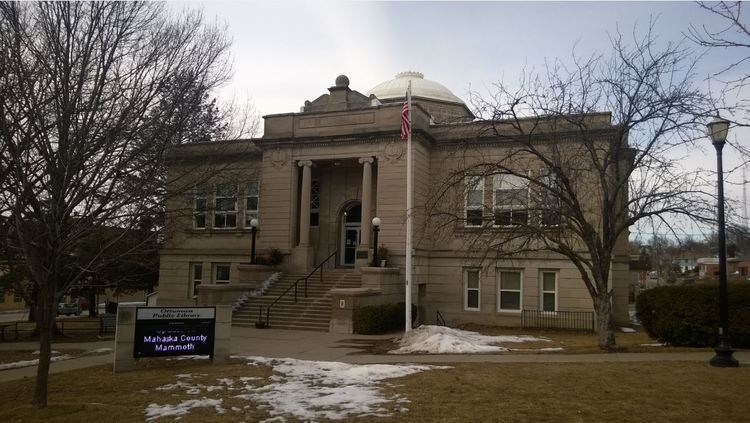Built 1901 Opened 1901 Architectural style Neoclassical architecture | NRHP Reference # 84001605 Phone +1 641-682-7563 Added to NRHP 27 April 1984 | |
 | ||
Address 102 W 4th St, Ottumwa, IA 52501, USA Hours Closed now Monday9AM–7PMTuesday9AM–7PMWednesday9AM–7PMThursday9AM–7PMFriday9AM–5PMSaturday9AM–5PMSundayClosedSuggest an edit Similar Bridge View Center, Ottumwa City Hall, Eldon Public Library, Hotel Ottumwa, Greater Ottumwa Park Profiles | ||
Ottumwa public library to hold book selection party
Ottumwa Public Library is a public library located in downtown Ottumwa, Iowa, United States. The current building was built in 1901. It is part of the Central Park area, which is the civic center of the community. It includes the Wapello County Courthouse, Ottumwa City Hall and St. Mary of the Visitation Catholic Church. The library was listed on the National Register of Historic Places in 1984.
Contents
- Ottumwa public library to hold book selection party
- Ottumwa public library begins reading program for ages 0 3
- Architecture
- References
Ottumwa public library begins reading program for ages 0 3
Architecture
The library building was designed by the Des Moines architectural firm of Smith and Gutterson and funded by Andrew Carnegie. It was built in the Neo-Classical style. The two-story building rests on a raised basement and is topped by a shallow Roman style dome. It features a symmetrical façade and a projecting portico. The exterior walls are covered in grey Bedford stone that is cut into smooth ashlar blocks. Larger blocks, or quoins, are featured on the corners of the building. The original main doors were replaced c. 1950, but the original iron scrollwork remains in the transom area.
The interior of the building has retained its original layout. It features a central rotunda that is flanked by two reading rooms. The library stacks are located in the room at the rear of the building.
The interior dome is highlighted with stained glass in the center. A local painter named Johannes Scheiwe painted a mural in the dome and allegorical figures in the spandrels below. Because of water damage the dome was re-plastered and painted in the 1940s. The allegorical figures of the arts, poetry, history and science were spared. They are clothed in both Classical and Victorian dress. The rotunda also retains the original tile floor. The hexagonal tiles feature a creamy white center area and blue and grey patterned border.
